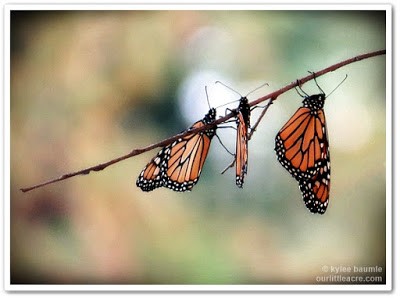May 20, 2017 – Saving the Monarch
![]() As I was writing the headline for this post, I stopped for a nanosecond to ponder whether I should have written “monarch butterfly” instead of just the word “monarch.” And in that nanosecond I realized that, unless you’ve spent the past few years on Pluto, waiting to hitchhike a ride home from the New Horizons space probe (which is going in the opposite direction, you nitwit!), when you see the words “saving” and “monarch” together, you know that somebody is talking about the fact that this is a species in decline. Or at least you should.
As I was writing the headline for this post, I stopped for a nanosecond to ponder whether I should have written “monarch butterfly” instead of just the word “monarch.” And in that nanosecond I realized that, unless you’ve spent the past few years on Pluto, waiting to hitchhike a ride home from the New Horizons space probe (which is going in the opposite direction, you nitwit!), when you see the words “saving” and “monarch” together, you know that somebody is talking about the fact that this is a species in decline. Or at least you should.
It feels as though this issue comes up at least once a week on The Mike Nowak Show, though I know that’s not literally true. It just feels that way. And because Peggy Malecki and I are keenly aware of both the iconic nature Danaus plexippus and how it seems to be perching on a precipice, we refer to it quite often.
So when a horticultural friend like Kylee Baumlee writes a book called The Monarch: Saving Our Most-Loved Butterfly, you can be sure that’s she’s going to appear on this program.
This might be the perfect book for the “casual biologist”–the person who likes nature, has heard something about the threat to monarch butterflies, but really hasn’t been paying close attention. Kylee’s approach is an informative, very positive and action-oriented approach to what is truly a dire situation. As she writes:
When a particular population of a species declines to a low point, below which recovery is unlikely, we say it has reached quasi-extinction. For example, the monarch population is greatly affected by degradation of the overwintering forests in Mexico and loss of breeding habitat in the U.S. and Canada, pesticide use, climate change, urbanization and disease. Though the monarch has proven to be resilient to some degree, pressure from its threats may be too much for it to rise above if efforts are not made to reduce those threats…
What all this means (given the most generous data and taking into account the average population growth over a period of years) is that if things continue the way they are going now, the eastern population is at risk of reaching a population count too low from which to recover.
Baumlee’s optimism about federal, state, local and citizen efforts seems to fuel her hope that we can help this insect rebound. Personally, I think we will witness the quasi-extinction of monarchs within our lifetimes but, boy, would I like to be proven wrong. 
I need to mention that the book is chock full of photos, many taken by Baumlee herself, and it describes the life cycle of monarchs, including how you can raise them yourself. Most monarch eggs have about a 5% chance of developing into an adult, thanks to predators, weather, parasites and diseases, which may be why so many people seek out eggs on milkweed plants and transfer them to more hospitable venues.
By the way, if you want to follow the migration of monarchs to date in 2017, click on this very cool animated map of sightings across North America.
Speaking of the unfortunately-named milkweed, she explains that it is the only kind of plant on which monarchs will raise their young. Of course, there are dozens of different kinds of Asclepius species across North America but the goal is to grow the ones that are native to your particular region in order to obtain the best results for the plants and for the monarchs.
But the 800-pound chemical truck in the room is the pesticide Roundup (active ingredient glyphosate), which has been causing milkweed to disappear from farmland and adjoining areas for about twenty years–which is about the length of time that the monarch numbers have been decreasing. Hmm. As Baumlee points out (above), there are other factors involved, such as climate change (caused by humans), habitat loss (caused by humans), diseases and predators (some of it linked, no doubt, to human activity).
And while Baumlee seems to think that milkweed-planting programs can put a dent in the Asclepius deficit, I just happened to stumble across this article from the Minn Post Earth Journal: “How much milkweed to save monarch? Only 1.8 billion news stems, study finds.” Ouch. From the the story by Ron Meador:
By my very rough calculation, it amounts to 73 milkweed stems for each and every household in the target breeding range, which includes Minnesota, Wisconsin, Iowa, Michigan, Illinois, Indiana and Ohio, along with parts of Kansas, Nebraska, South Dakota, North Dakota and Missouri.
I guess we’d better get started. Baumlee devotes an entire section of the book to “Ways to Help the Monarch: Projects for Everyone” and she lists a number of organizations that are working hard on this problem, including Monarch Watch and Monarch Joint Venture.
As I said before, I hope her optimism isn’t misplaced.

